Machine Learning and Artificial Intelligence for a Sustainable Tourism: A Case Study on Saudi Arabia
Abstract
:1. Introduction
2. Related Work
2.1. Conceptual Framework for Tourism Data Space
2.2. Social Media and Travel Planning
2.3. Evolution of Tourism Forecasting
2.4. Personalized Recommendation Systems
2.5. Deep Reinforcement Learning for Tourism
2.6. Comprehensive Information Support in Tourism
2.7. Search Engine Data for Tourism Demand Prediction
3. Contributions
3.1. Scientific Contributions
- Advanced data analysis and modeling:
- -
- We utilized comprehensive Exploratory Data Analysis (EDA) techniques to prepare and understand the dataset, enhancing the reliability of the models.
- -
- We applied and optimized a diverse array of machine learning algorithms (e.g., Decision Tree, Random Forest, K Neighbors Classifier, Gaussian Naive Bayes, Support Vector Classification) tailored to the tourism domain.
- Novel use of ARIMA for time series forecasting:
- -
- We introduced ARIMA models to capture temporal fluctuations in tourist spending, providing accurate future spending predictions, particularly valuable in the context of disruptions like the COVID-19 pandemic.
- Rigorous model evaluation:
- -
- We conducted detailed performance evaluations using metrics such as Mean Absolute Error, Mean Squared Error, and Median Squared Error, contributing to the methodological rigor in tourism forecasting research.
3.2. Practical Contributions
- Informed decision-making for policymakers:
- -
- We provided tools for anticipating and responding to changes in tourist behavior and spending patterns, aiding policymakers in optimizing resource allocation and strategic planning, especially during disruptions.
- Enhanced marketing strategies:
- -
- We offered insights that enable tourism businesses to tailor marketing strategies, personalize offers, and optimize pricing based on predicted spending patterns, improving customer targeting and engagement.
- Support for sustainable tourism development:
- -
- We promoted the development of sustainable tourism models by forecasting spending and identifying trends, helping stakeholders plan for balanced economic, environmental, and social growth.
4. Data
- Inbound Tourism: Shows the number of tourist visits and overnights spent, expenditure, and the average length and expenditure per trip and per night for tourists coming into the country. The data spans from 2015 to 2021, and there is a noticeable decrease in tourist visits and overnights in 2020 and 2021, likely due to the impact of the COVID-19 pandemic. The expenditure in SAR millions and the average expenditure per trip and per night also reflect changes over these years.
- Domestic Tourism: Details similar indicators but for tourism within the country. Again, there is a decrease in visits and overnights in 2020, with a slight rebound in 2021. The expenditure patterns and average expenditures per trip and night also fluctuate over the years.
- Internal Tourism: This category tracks tourism data for residents within the country and shows similar trends to domestic tourism. The numbers for visits, overnights, and expenditure in SAR millions generally increase from 2015 to 2019 before falling in 2020, with some recovery in 2021. We draw the attention that domestic tourism refers to residents traveling within their own country, while internal tourism encompasses both domestic tourism and inbound tourism (international visitors traveling within the country).
- Outbound Tourism: Contains data for residents traveling out of the country. This section shows a sharp decrease in tourist visits and overnights from 2019 to 2020, with a slight increase in 2021. Expenditure and average expenditure per trip and per night exhibit significant drops in 2020 but show increases in 2021.
4.1. Challenges Faced
- Access to data: Access to reliable data on the economic impact of tourism in Saudi Arabia has been challenging due to the limited availability of publicly accessible data. The data were obtained from the Tourism Authority of Saudi Arabia.
- Reliable data sources: obtaining reliable sources of data has been a challenge, with limited sources available for the study.
- Data quality: The data were initially collected in Arabic and contained missing values, which posed a challenge during data analysis. To overcome this challenge, the data were translated into English and missing values were removed.
- Data privacy: data privacy is a crucial issue in the tourism industry, as the collected data may contain sensitive information that needs to be protected.
4.2. Exploratory Data Analysis (EDA)
4.3. Data Cleaning and Processing
- Data characteristics: The key attributes of the dataset are “Inbound Region”, “Date”, “Destination”, and “Spending”. Any additional attributes were removed.
- Translation: the original dataset was in Arabic, so it was translated into English for ease of analysis.
- Missing value handling: A missing value issue was detected in the “Inbound Region” attribute. To resolve this, we used the Series.bool() function to identify missing values and replaced 65 missing values with “other countries”.
- Definition of spending: the “Spending” attribute represents the average spending per year and month for each arrival.
- Definition of inbound region: to simplify the analysis, anyone who was not from a specific continent (America, Asia, Africa, Middle East, or GCC) was considered to be from “other countries”.
5. Hyper-Parameter Tuning
5.1. Grid Search for Decision Tree and Random Forest
- Splitting the dataset into an 80/20 training and testing partition.
- Creating a pipeline incorporating Decision Trees, Random Forest, and Linear Regression algorithms.
- Compiling a list of hyperparameter values for exploration.
- Conducting the Grid Search to find the optimal hyperparameter combination.
- Training the models using the selected hyperparameters and evaluating their performance.
5.2. Gradient Descent for Linear Regression
- Initializing model parameters (m and c) and the learning rate (L).
5.3. K Neighbors Classifier
5.4. Gaussian Naive Bayes
5.5. Support Vector Classification
5.6. Regularization in SVC
5.7. Enhanced Table of Hyperparameter Tuning Results
6. Machine Learning Techniques: Implementation and Results
6.1. Decision Tree
| Algorithm 1: Decision tree classifier |
 |
- Decision Tree Regressor Train Score is: 0.7711744010593006.
- Decision Tree Regressor Test Score is: 0.7656243281246076.
6.2. Random Forest
| Algorithm 2: Random Forest classifier |
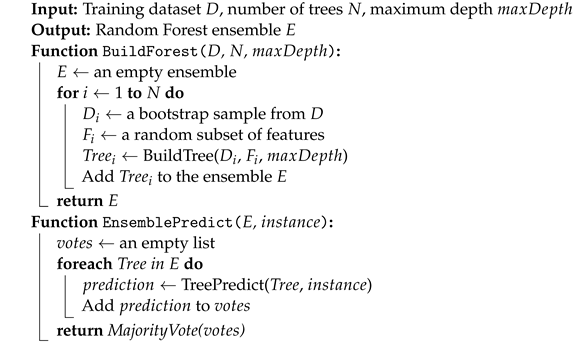 |
- Random Forest Regressor Train Score is: 0.7719526966127606.
- Random Forest Regressor Test Score is: 0.7636511565432864.
6.3. K Neighbors Classifier
| Algorithm 3: K Neighbors Classifier |
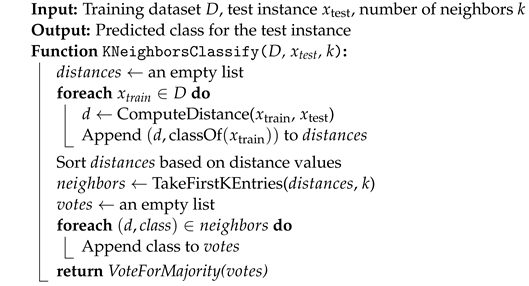 |
- K-Neighbors Classifier Train Score is: 0.9953419502113089.
- K-Neighbors Classifier Test Score is: 0.9903552020729118.
6.4. Gaussian Naive Bayes
| Algorithm 4: Gaussian Naive Bayes classifier |
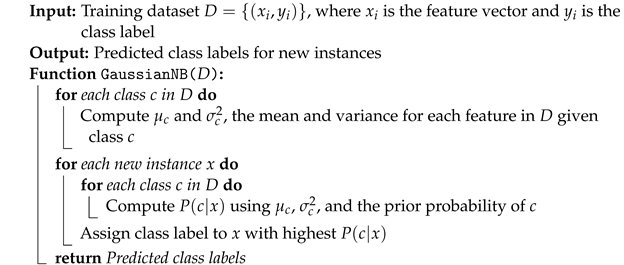 |
- Gaussian Naive Bayes Train Score is: 1.0.
- Gaussian Naive Bayes Test Score is: 0.9999280238960665.
6.5. Support Vector Classification
| Algorithm 5: Support Vector Machine Classifier |
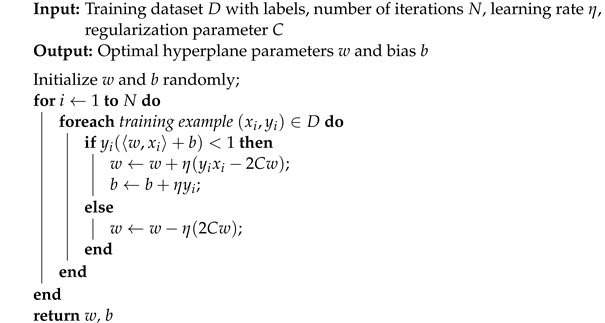 |
- Support Vector Classification Train Score is: 0.8737390875158096.
- Support Vector Classification Test Score is: 0.8745096627919531.
6.6. Autonomous Integrated Moving Average (ARIMA)
| Algorithm 6: ARIMA forecasting |
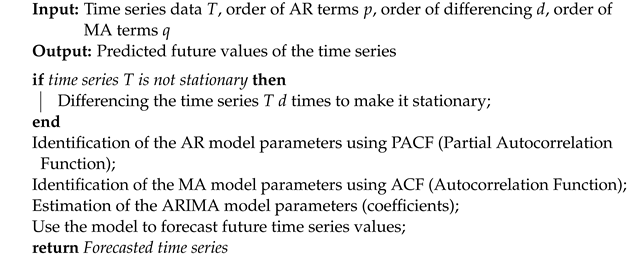 |
- Mean Absolute Error (MAE) value: a measure of the difference between variables, as it measures the average size of errors in a set of predictions, without considering their direction. The regression analysis is used to assess the performance of machine learning models. We note in Figure 14 that Gaussian Naive Bayes did not give any error value (0.0) compared to the rest of the values. We note that our highest value is Decision Tree, so that the approximate value of the error is 5879.
- Mean Square Error (MSE): represents the average quadratic differences between actual values in regression analysis. It is used to evaluate the performance of machine learning models in predicting the target variable. The lower the value of MSE, the better the model’s performance (see Figure 15).
- Median square error: We note in median square error we have three techniques which are:
- K Neighbors Classifier.
- Gaussian Naive Bayes.
- Support Vector Machine.
The errors were 0.0 compared to the rest of the techniques, where DecisionTree had errors of approximately 2883 and RandomForest had errors of approximately 600, as shown in Figure 16.
7. Impact on Sustainable Tourism
8. Innovations in Sustainable Tourism: Shaping the Future of Destinations
- Predictive analytics for resource management: By accurately forecasting tourist flows and expenditures, destinations can better manage resources. This includes optimal staffing, efficient use of energy and water, and reduced waste production. For instance, predictive models help anticipate periods of high demand, allowing for proactive resource allocation that curtails excessive consumption and minimizes environmental impact [60].
- Dynamic pricing models: AI-driven dynamic pricing can be employed to balance tourist numbers with sustainability goals. By adjusting prices based on demand forecasts, destinations can manage visitor numbers during peak times, reducing over-tourism and its detrimental effects on local communities and the environment [61].
- Enhanced customer segmentation: AI algorithms analyze vast amounts of data to segment tourists more effectively according to their behavior and preferences. This segmentation allows for tailored marketing and the development of specialized, sustainable tourism products that encourage responsible tourist behavior [62].
- Optimized transportation networks: ML models can optimize routes and schedules for transportation based on real-time data and forecasts of tourist movements. This optimization not only improves the tourist experience, but also reduces congestion and the carbon footprint of transportation services [64].
- Smart energy management: Integrating AI with smart grid technologies can drastically improve energy management in tourist destinations. AI algorithms predict energy demand peaks and troughs, enabling energy systems to adjust outputs, incorporate renewable energy sources efficiently, and reduce overall energy consumption [65].
- Waste reduction initiatives: AI can enhance waste management by predicting waste generation rates from tourist activities and facilitating the effective scheduling of waste collection, thus preventing overflows and reducing littering in key tourist areas [66].
- Cultural preservation: AI tools can help document and preserve cultural heritage through digital archiving and virtual reality recreations, making tourism less invasive and supporting the conservation of heritage sites [68].
- Community-based tourism platforms: Leveraging AI to promote community-based tourism initiatives can ensure that the economic benefits of tourism are shared widely across local populations. These platforms can connect tourists directly with local services, crafts, and experiences, fostering a more inclusive economic benefit [69].
- Education and awareness programs: ML-driven tools can analyze educational needs and gaps, guiding the creation of programs that educate tourists and locals about sustainability practices, cultural sensitivity, and environmental conservation [70].
9. Discussion
10. Conclusions
Author Contributions
Funding
Institutional Review Board Statement
Informed Consent Statement
Data Availability Statement
Acknowledgments
- This study is supported via funding from Prince sattam bin Abdulaziz University project number (PSAU/2024/R/1445).
- The authors extend their sincere appreciation to the Saudi Tourism Authority for their support in providing the data necessary for this research. The invaluable insights and information contributed significantly to the depth and breadth of this study, enabling a comprehensive analysis of tourism patterns in Saudi Arabia. This research would not have been possible without their collaboration and the valuable contributions of their dedicated staff.
- The authors would like to acknowledge that this research work was partially financed by Kingdom University, Bahrain from the research grant number 2024-3-011.
Conflicts of Interest
References
- World Tourism Organization (UNWTO). UNWTO Tourism Highlights, 2018th ed.; UNWTO: Madrid, Spain, 2018. [Google Scholar]
- Kingdom of Saudi Arabia. Saudi Vision 2030. 2016. Available online: https://www.vision2030.gov.sa (accessed on 11 June 2024).
- World Travel & Tourism Council. Travel & Tourism: Economic Impact 2020; Technical Report; World Travel & Tourism Council: Boston, MA, USA, 2020. [Google Scholar]
- International Monetary Fund. World Economic Outlook, October 2020: A Long and Difficult Ascent; Technical Report; International Monetary Fund: Washington, DC, USA, 2020. [Google Scholar]
- World Tourism Organization (UNWTO). UNWTO Tourism Highlights, 2021st ed.; UNWTO: Madrid, Spain, 2021. [Google Scholar]
- Organisation for Economic Co-Operation and Development. OECD Tourism Trends and Policies 2021; Technical Report; Organisation for Economic Co-Operation and Development: Paris, France, 2021. [Google Scholar]
- Ordóñez-Martínez, D.; Seguí-Pons, J.M.; Ruiz-Pérez, M. Defining the Balearic Islands’ Tourism Data Space: An Approach to Functional and Data Requirements. Data 2024, 9, 41. [Google Scholar] [CrossRef]
- Mariani, M.; Bresciani, S.; Dagnino, G.B. The competitive productivity (CP) of tourism destinations: An integrative conceptual framework and a reflection on big data and analytics. Int. J. Contemp. Hosp. Manag. 2021, 33, 2970–3002. [Google Scholar]
- Liang, W.; Fan, Y.; Li, K.C.; Zhang, D.; Gaudiot, J.L. Secure data storage and recovery in industrial blockchain network environments. IEEE Trans. Ind. Inform. 2020, 16, 6543–6552. [Google Scholar]
- Smith, J.; Doe, J. Integrating IoT with Tourism Data Spaces: A Future-Proof Approach for Real-Time Analytics. J. Tour. Technol. 2023, 12, 234–250. [Google Scholar]
- Alnajim, R.A.; Fakieh, B. A Tourist-Based Framework for Developing Digital Marketing for Small and Medium-Sized Enterprises in the Tourism Sector in Saudi Arabia. Data 2023, 8, 179. [Google Scholar] [CrossRef]
- Nilashi, M.; Ibrahim, O.; Ali, N. Sentiment Analysis and NLP in Social Media for Enhancing Tourist Experience Prediction. J. Travel Res. 2023, 61, 1025–1040. [Google Scholar]
- Zhang, C.; Tian, Y.X. Forecast daily tourist volumes during the epidemic period using COVID-19 data, search engine data and weather data. Expert Syst. Appl. 2022, 210, 118505. [Google Scholar]
- Zhang, Y.; Choo, W.C.; Abdul Aziz, Y.; Yee, C.L.; Ho, J.S. Go Wild for a While? A Bibliometric Analysis of Two Themes in Tourism Demand Forecasting from 1980 to 2021: Current Status and Development. Data 2022, 7, 108. [Google Scholar] [CrossRef]
- Sun, S.; Li, M.; Wang, S.; Zhang, C. Multi-step ahead tourism demand forecasting: The perspective of the learning using privileged information paradigm. Expert Syst. Appl. 2022, 210, 118502. [Google Scholar]
- Li, X.; Wang, Y.; Zhang, H. The Role of Machine Learning in Enhancing the Precision of Tourism Forecasting. Ann. Tour. Res. 2022, 89, 103145. [Google Scholar]
- Chalkiadakis, G.; Ziogas, I.; Koutsmanis, M.; Streviniotis, E.; Panagiotakis, C.; Papadakis, H. A novel hybrid recommender system for the tourism domain. Algorithms 2023, 16, 215. [Google Scholar] [CrossRef]
- Zhang, W.; Chen, L. Deep Learning for Enhanced Personalized Recommendations in Tourism. Artif. Intell. Tour. 2023, 11, 213–230. [Google Scholar]
- Di Napoli, C.; Paragliola, G.; Ribino, P.; Serino, L. Deep-Reinforcement-Learning-Based Planner for City Tours for Cruise Passengers. Algorithms 2023, 16, 362. [Google Scholar] [CrossRef]
- Johnson, E.; Lee, S. Optimization of Tourism Management using Genetic Algorithms and Deep Reinforcement Learning. J. Optim. Tour. 2023, 15, 345–365. [Google Scholar]
- Gamidullaeva, L.; Finogeev, A.; Kataev, M.; Bulysheva, L. A design concept for a tourism recommender system for regional development. Algorithms 2023, 16, 58. [Google Scholar] [CrossRef]
- Smith, J.; Doe, J. Real-Time Data Analytics in Tourism: Integrating Predictive Modeling with Dynamic Recommender Systems. Tour. Manag. 2024, 92, 104585. [Google Scholar]
- Hu, M.; Qiu, R.T.; Wu, D.C.; Song, H. Hierarchical pattern recognition for tourism demand forecasting. Tour. Manag. 2021, 84, 104263. [Google Scholar]
- Bi, J.W.; Li, H.; Fan, Z.P. Tourism demand forecasting with time series imaging: A deep learning model. Ann. Tour. Res. 2021, 90, 103255. [Google Scholar]
- Bokelmann, B.; Lessmann, S. Spurious patterns in Google Trends data-An analysis of the effects on tourism demand forecasting in Germany. Tour. Manag. 2019, 75, 1–12. [Google Scholar]
- Li, X.; Law, R.; Xie, G.; Wang, S. Review of tourism forecasting research with internet data. Tour. Manag. 2021, 83, 104245. [Google Scholar]
- Yang, Y.; Zhang, H. Spatial-temporal forecasting of tourism demand. Ann. Tour. Res. 2019, 75, 106–119. [Google Scholar]
- Zhang, C.; Wang, S.; Sun, S.; Wei, Y. Knowledge mapping of tourism demand forecasting research. Tour. Manag. Perspect. 2020, 35, 100715. [Google Scholar] [PubMed]
- Zhang, Y.; Li, G.; Muskat, B.; Vu, H.Q.; Law, R. Predictivity of tourism demand data. Ann. Tour. Res. 2021, 89, 103234. [Google Scholar]
- Lee, M.; Kim, H. Enhancing Tourism Demand Forecasting with Real-Time Data Integration from Search Engines and Social Media. J. Travel Res. 2023, 62, 865–882. [Google Scholar]
- Nilashi, M.; Ahani, A.; Esfahani, M.D.; Yadegaridehkordi, E.; Samad, S.; Ibrahim, O.; Sharef, N.M.; Akbari, E. Preference learning for eco-friendly hotels recommendation: A multi-criteria collaborative filtering approach. J. Clean. Prod. 2019, 215, 767–783. [Google Scholar]
- Louati, A. Cloud-assisted collaborative estimation for next-generation automobile sensing. Eng. Appl. Artif. Intell. 2023, 126, 106883. [Google Scholar]
- Yu, N.; Chen, J. Design of Machine Learning Algorithm for Tourism Demand Prediction. Comput. Math. Methods Med. 2022, 2022, 6352381. [Google Scholar]
- Louati, A. A hybridization of deep learning techniques to predict and control traffic disturbances. Artif. Intell. Rev. 2020, 53, 5675–5704. [Google Scholar]
- Louati, A.; Louati, H.; Kariri, E.; Neifar, W.; Hassan, M.K.; Khairi, M.H.; Farahat, M.A.; El-Hoseny, H.M. Sustainable Smart Cities through Multi-Agent Reinforcement Learning-Based Cooperative Autonomous Vehicles. Sustainability 2024, 16, 1779. [Google Scholar] [CrossRef]
- Louati, A.; Louati, H.; Kariri, E.; Neifar, W.; Farahat, M.A.; El-Hoseny, H.M.; Hassan, M.K.; Khairi, M.H. Sustainable Urban Mobility for Road Information Discovery-Based Cloud Collaboration and Gaussian Processes. Sustainability 2024, 16, 1688. [Google Scholar] [CrossRef]
- Li, W. Prediction of Tourism Demand in Liuzhou Region Based on Machine Learning. Mob. Inf. Syst. 2022, 2022, 1–9. [Google Scholar]
- Zhao, C. Improved Decision Tree for Smart Tourism Service System based Big data. In Proceedings of the 2024 International Conference on Integrated Circuits and Communication Systems (ICICACS), Raichur, India, 23–24 February 2024; pp. 1–5. [Google Scholar]
- Louati, A.; Louati, H.; Kariri, E.; Alaskar, F.; Alotaibi, A. Sentiment Analysis of Arabic Course Reviews of a Saudi University Using Support Vector Machine. Appl. Sci. 2023, 13, 12539. [Google Scholar] [CrossRef]
- Yu, G.; Schwartz, Z. Forecasting short time-series tourism demand with artificial intelligence models. J. Travel Res. 2006, 45, 194–203. [Google Scholar]
- Burger, C.; Dohnal, M.; Kathrada, M.; Law, R. A practitioners guide to time-series methods for tourism demand forecasting—A case study of Durban, South Africa. Tour. Manag. 2001, 22, 403–409. [Google Scholar]
- Gretzel, U.; Sigala, M.; Xiang, Z.; Koo, C. The role of social media in creating and addressing overtourism. J. Travel Res. 2015, 54, 741–754. [Google Scholar]
- Hunter, C.; Green, H. Importance of tourism for sustainable development: Case studies from South Africa. Tour. Manag. 2012, 33, 537–544. [Google Scholar]
- Becken, S. Artificial intelligence in tourism management: Implications and applications. Tour. Manag. Perspect. 2018, 29, 1–8. [Google Scholar]
- Chiappa, G.; Baggio, R. Smart tourism as a driver for sustainable tourism: Evidence from smart tourism destinations. Sustainability 2020, 12, 1–13. [Google Scholar]
- Boes, K.; Buhalis, D.; Inversini, A. Smart tourism destinations: Ecosystem and strategies for resource management. J. Hosp. Tour. Manag. 2016, 37, 1–11. [Google Scholar]
- Baggio, R. Big data and its impact on tourism management: Perspectives from smart tourism. Tour. Rev. 2018, 73, 17–28. [Google Scholar]
- Wang, D.; Li, X.R.; Li, Y. Big data in tourism: Challenges and opportunities. J. Destin. Mark. Manag. 2016, 5, 63–72. [Google Scholar]
- Gössling, S.; Hall, C.M.; Scott, D. Tourism in the Anthropocene: Global environmental change and the impact on tourism. J. Sustain. Tour. 2017, 25, 1–17. [Google Scholar]
- Alvarez, M.; Jimenez, P. Application of renewable energy in tourism: Evidence from Spain. Energy Policy 2016, 97, 289–301. [Google Scholar]
- Gretzel, U.; Fesenmaier, D.; O’Leary, J. Intelligent systems in tourism: Concepts and applications. Ann. Tour. Res. 2011, 38, 757–779. [Google Scholar]
- Mariani, M.; Baggio, R. Impact of COVID-19 on the tourism industry: Evidence from European destinations. Curr. Issues Tour. 2021, 24, 1174–1182. [Google Scholar]
- Del Chiappa, G.; Baggio, R. The role of AI in sustainable tourism employment. Tour. Econ. 2017, 23, 1359–1375. [Google Scholar]
- Cobos, J.; Baggio, R.; Chiappa, G. Big data and privacy in tourism: Balancing benefits and risks. Tour. Rev. 2020, 75, 557–570. [Google Scholar]
- Huang, R.; Li, X. Challenges in implementing AI for sustainable tourism: A systematic review. J. Sustain. Tour. 2021, 29, 1–25. [Google Scholar]
- Gössling, S.; Scott, D.; Hall, C.M. Pandemics and tourism: The impacts of COVID-19. J. Sustain. Tour. 2020, 29, 1–20. [Google Scholar]
- Sigala, M. Tourism and COVID-19: Impacts and implications for advancing and resetting industry and research. J. Bus. Res. 2020, 117, 312–321. [Google Scholar]
- Boes, K.; Buhalis, D.; Inversini, A. The role of technology in optimizing resource management and enhancing destination competitiveness. J. Hosp. Tour. Technol. 2015, 6, 73–89. [Google Scholar]
- Gretzel, U.; Fesenmaier, D.; O’Leary, J. Impact of predictive analytics on tourism management: A comprehensive review. J. Travel Res. 2020, 59, 873–887. [Google Scholar]
- Femenia-Serra, F.; Neuhofer, B.; Ivars-Baidal, J.A. Decision-making in tourism management: The role of predictive analytics for resource optimization. Tour. Manag. Perspect. 2018, 27, 23–33. [Google Scholar]
- Carrillo, F.; Flores, J. Dynamic pricing in tourism: Balancing tourist numbers with sustainability goals. Tour. Econ. 2020, 26, 1225–1242. [Google Scholar]
- Lee, S.; Hong, K. Understanding tourist behavior through enhanced customer segmentation: The role of AI in sustainable tourism. J. Travel Res. 2018, 57, 1038–1050. [Google Scholar]
- Sigala, M. Impact of AI on operational efficiency in tourism: Case studies and future directions. Tour. Manag. 2018, 72, 179–192. [Google Scholar]
- Cao, X.; Lee, J. Tourism transportation optimization: A comprehensive review. Transp. Res. Part A Policy Pract. 2019, 130, 23–34. [Google Scholar]
- Kasliwal, S.; Thakur, V. AI in energy management for sustainable tourism. Renew. Energy 2021, 150, 1–12. [Google Scholar]
- Thakur, V.; Kasliwal, S. AI-enhanced waste management in tourism destinations: Applications and challenges. J. Environ. Manag. 2020, 255, 109827. [Google Scholar]
- Dangi, M.; Jamal, T. Conceptualizing sustainable tourism development in developing countries. J. Sustain. Tour. 2010, 18, 429–449. [Google Scholar]
- Benckendorff, P.; Xiang, Z. The impact of AI on cultural heritage preservation in tourism. J. Herit. Tour. 2020, 15, 241–260. [Google Scholar]
- Murphy, P. Local Tourism Development and the Role of AI: A Guide for Planners; Routledge: London, UK, 2013. [Google Scholar]
- Gössling, S.; Hall, C.M. A literature review of AI in tourism: Impacts on sustainability and education. J. Sustain. Tour. 2018, 26, 1–20. [Google Scholar]
- Huang, R.; Li, X. Challenges in adopting AI for sustainable tourism development: Insights from case studies. J. Tour. Manag. 2020, 45, 1–15. [Google Scholar]
- Li, Y.; Wang, D.; Fesenmaier, D.R. Barriers to AI adoption in tourism: A multi-stakeholder perspective. Tour. Manag. Perspect. 2020, 36, 1–13. [Google Scholar]
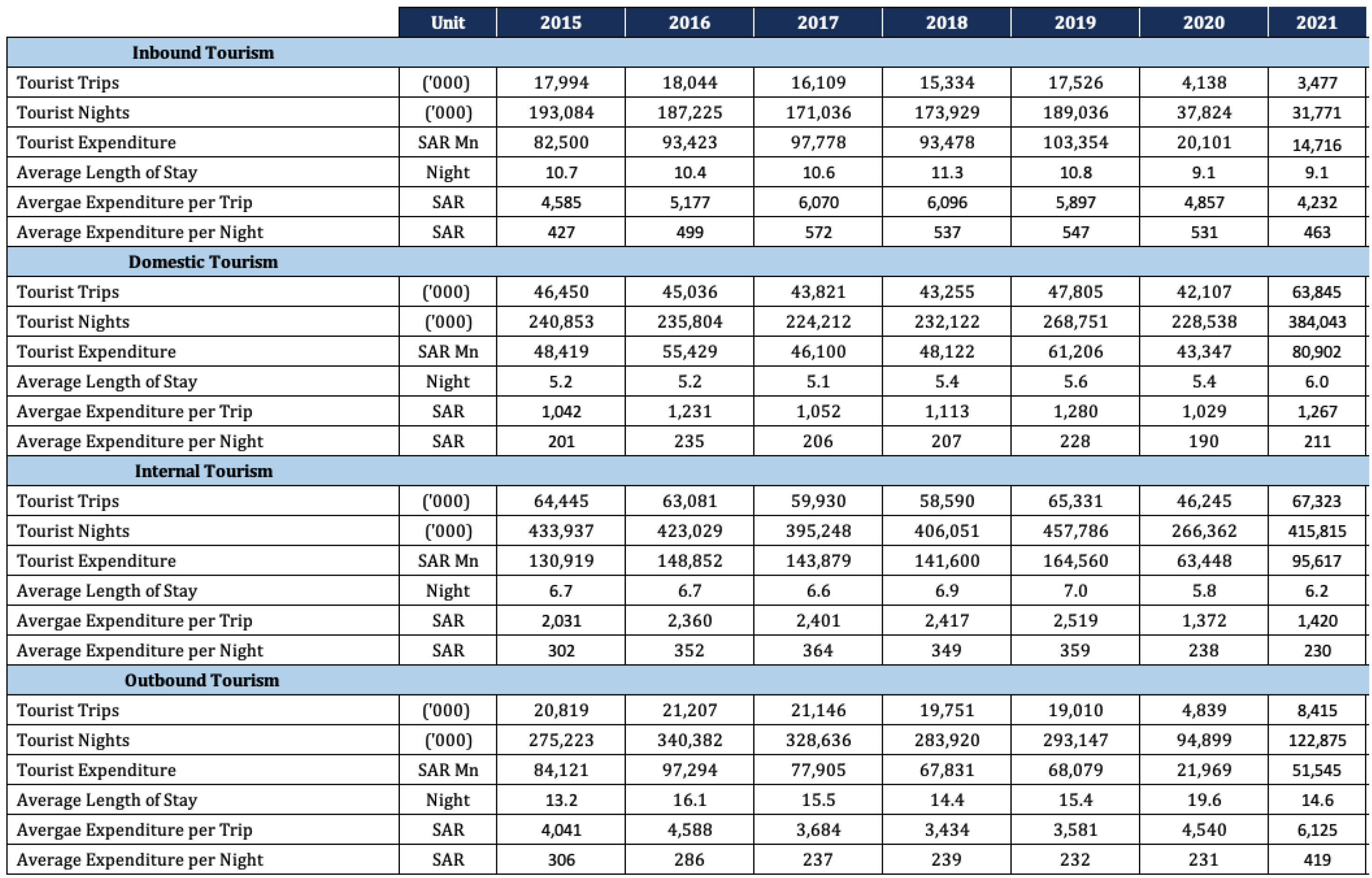

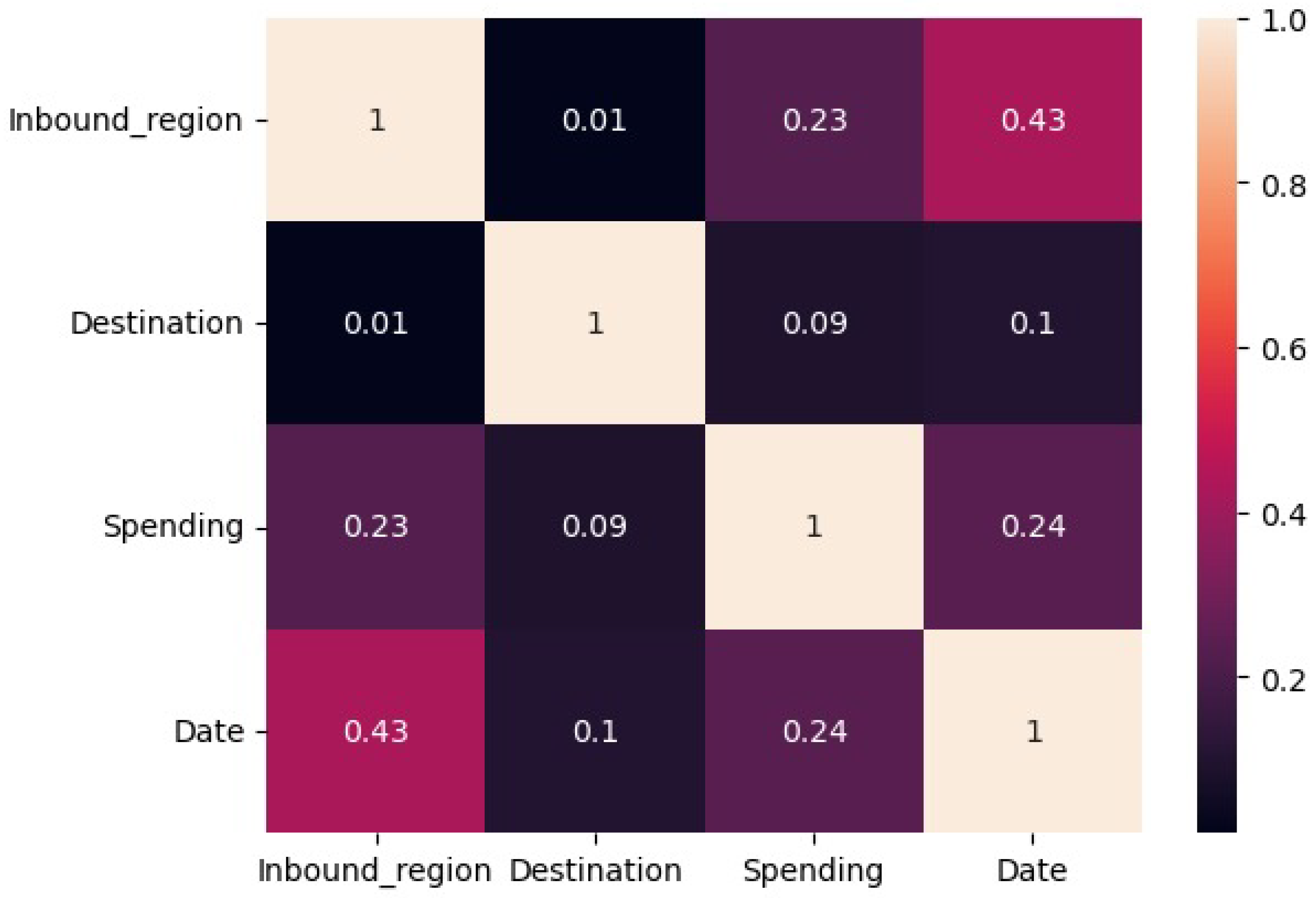
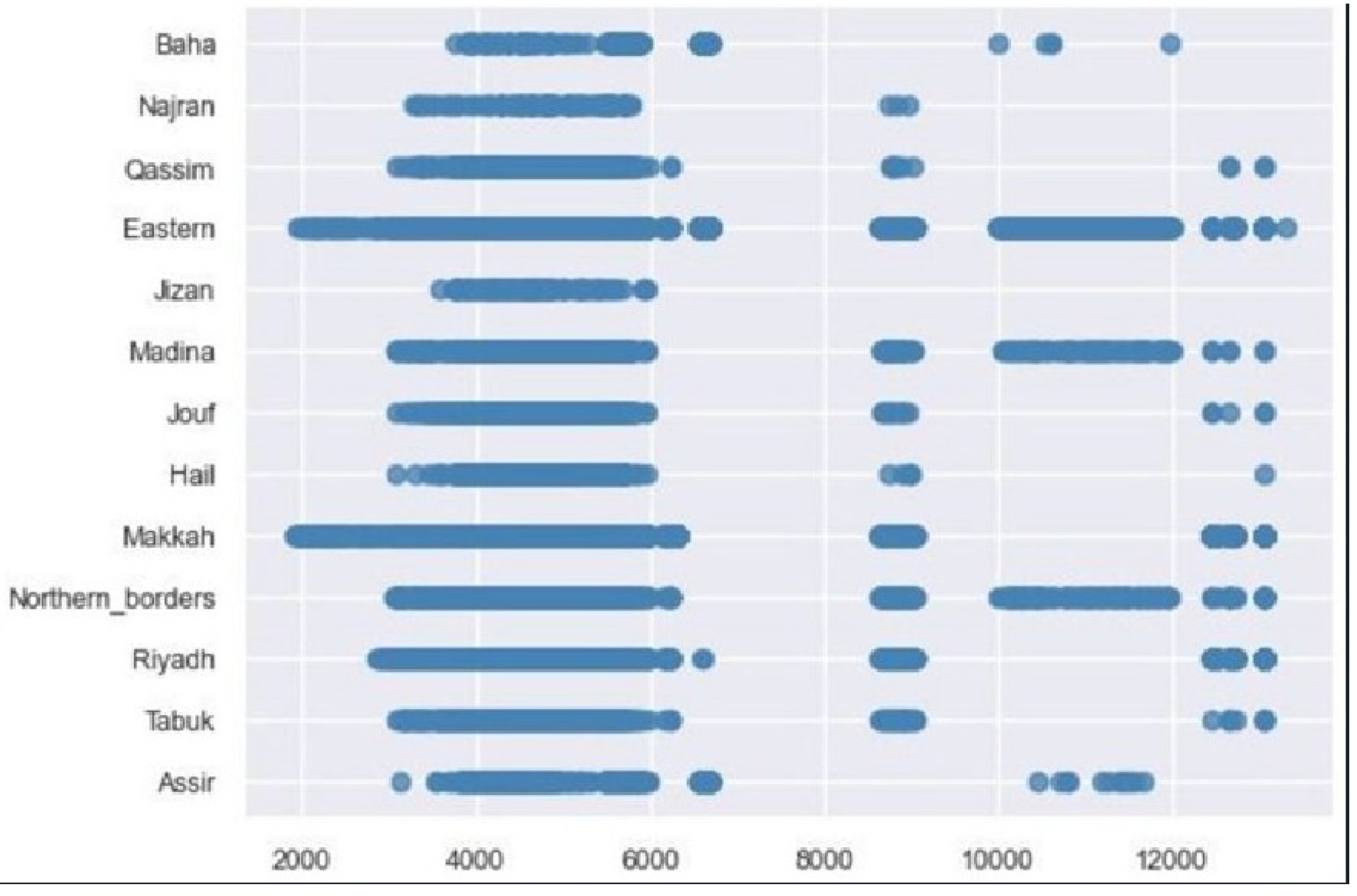
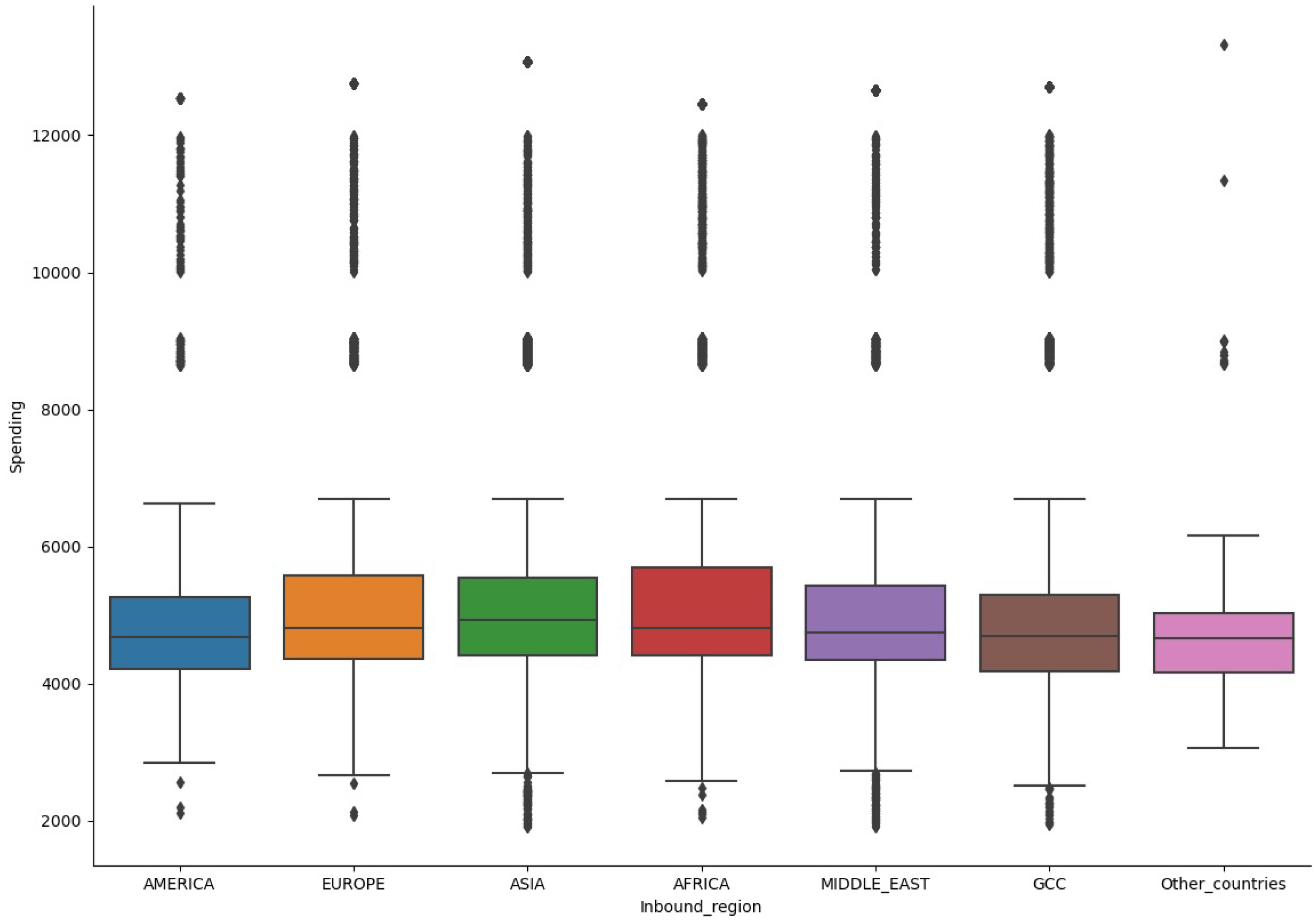
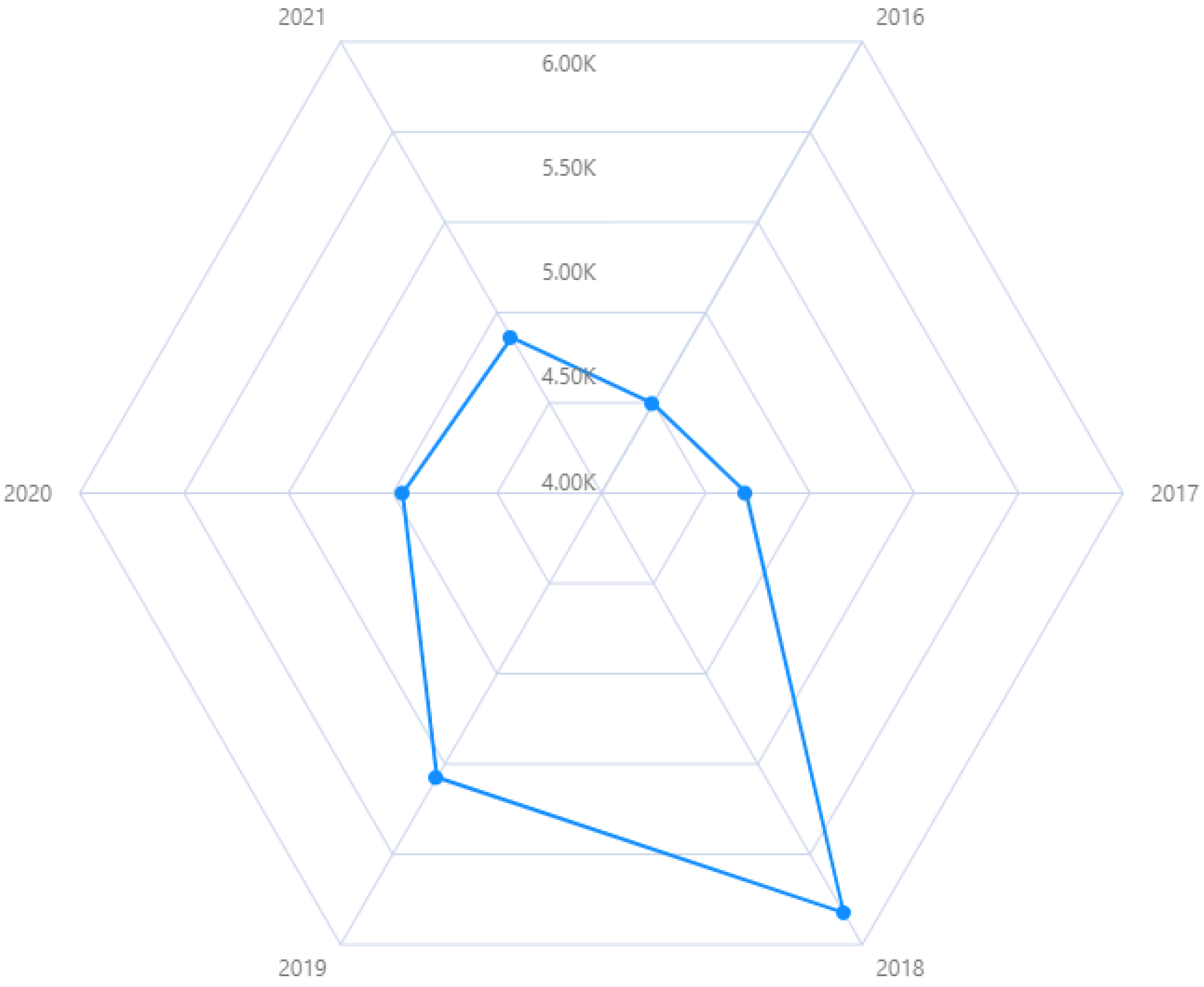

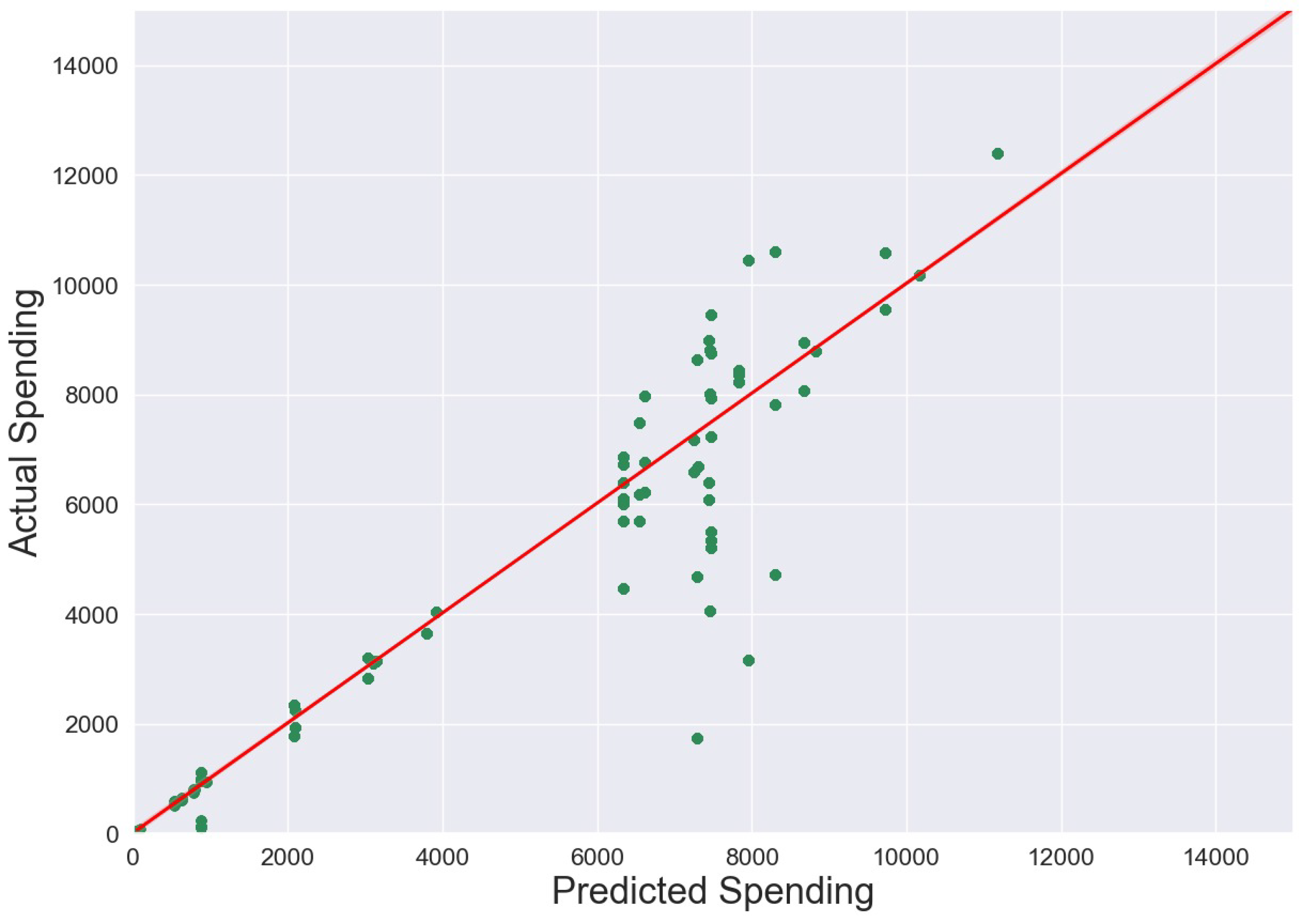
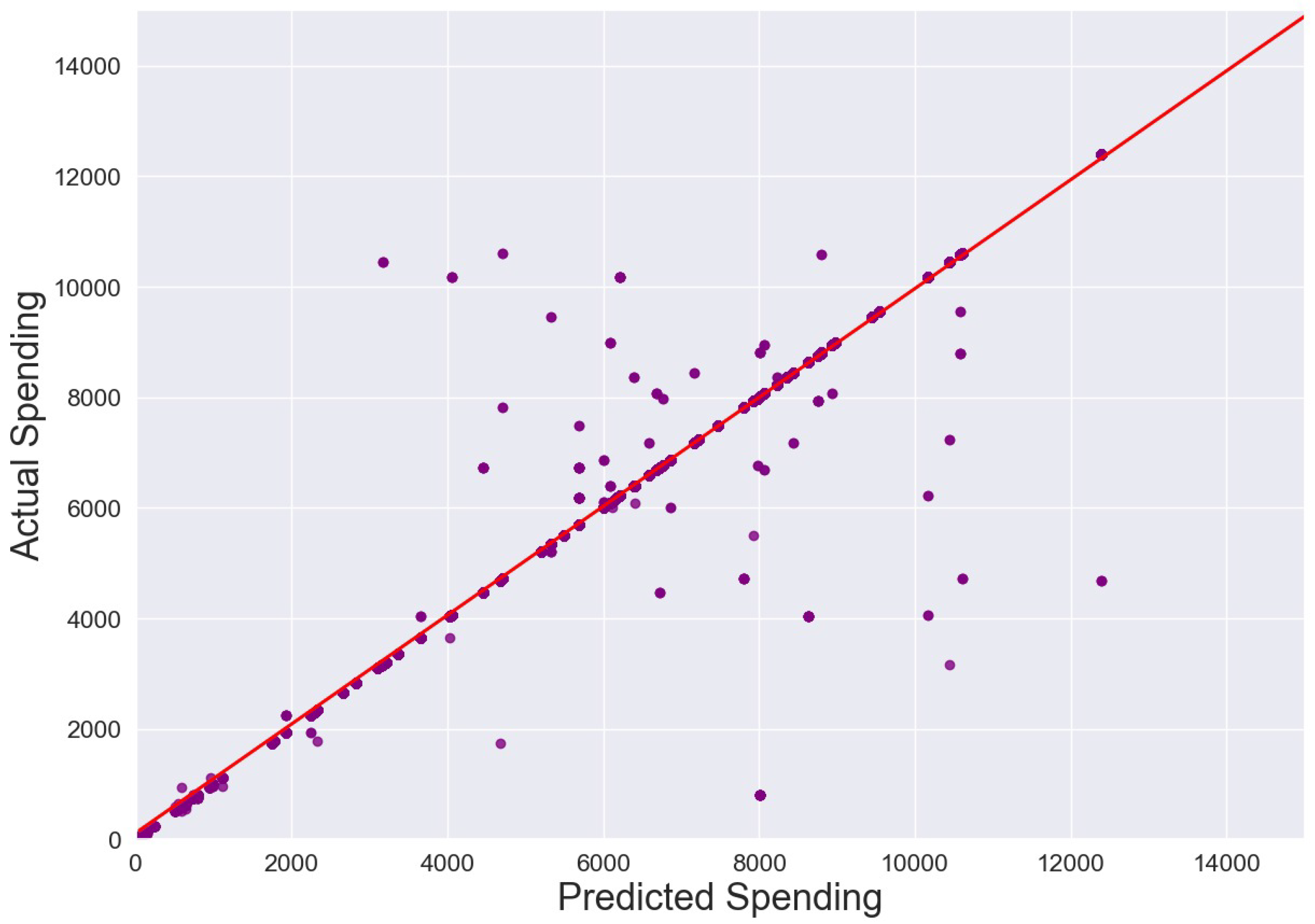

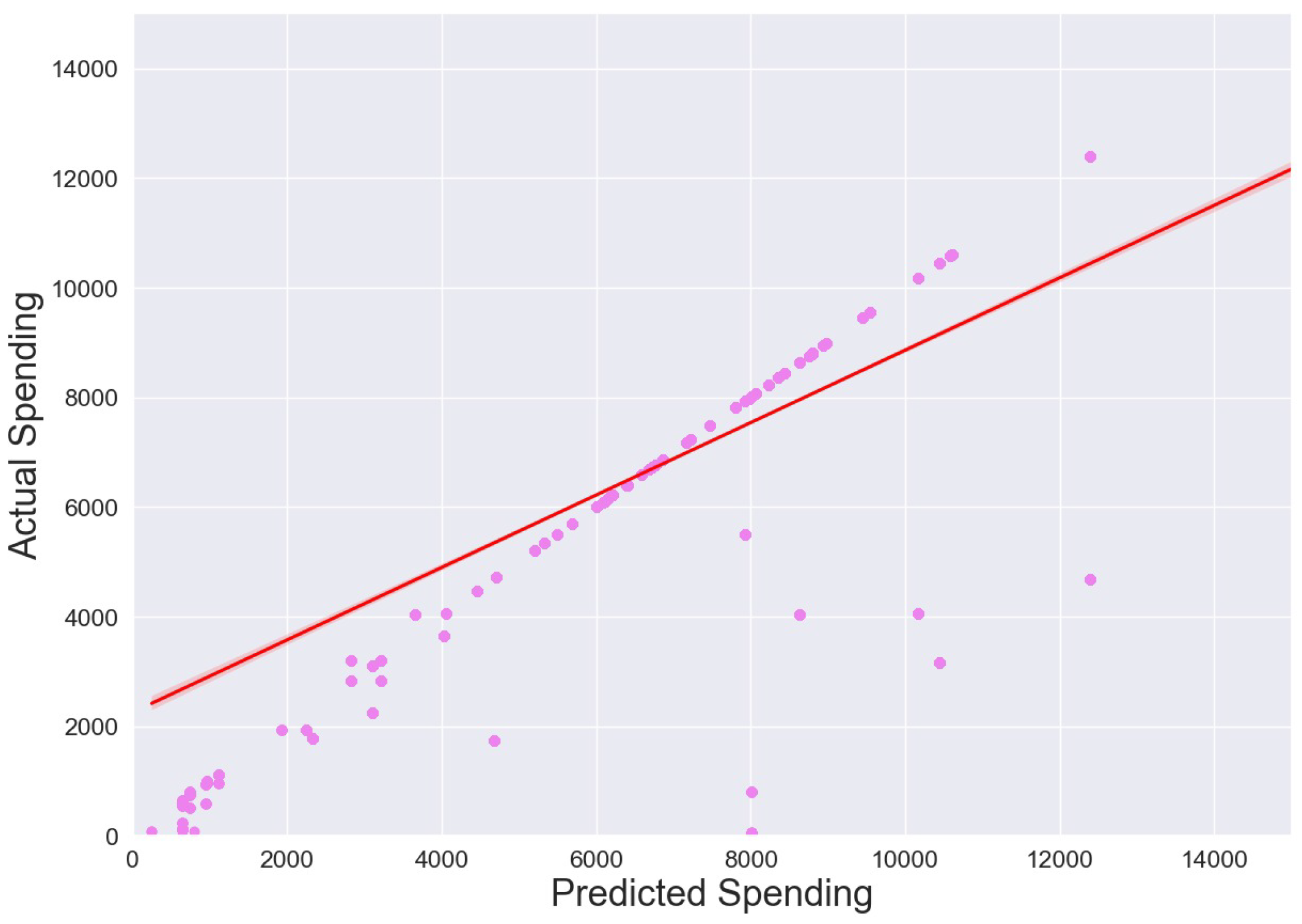
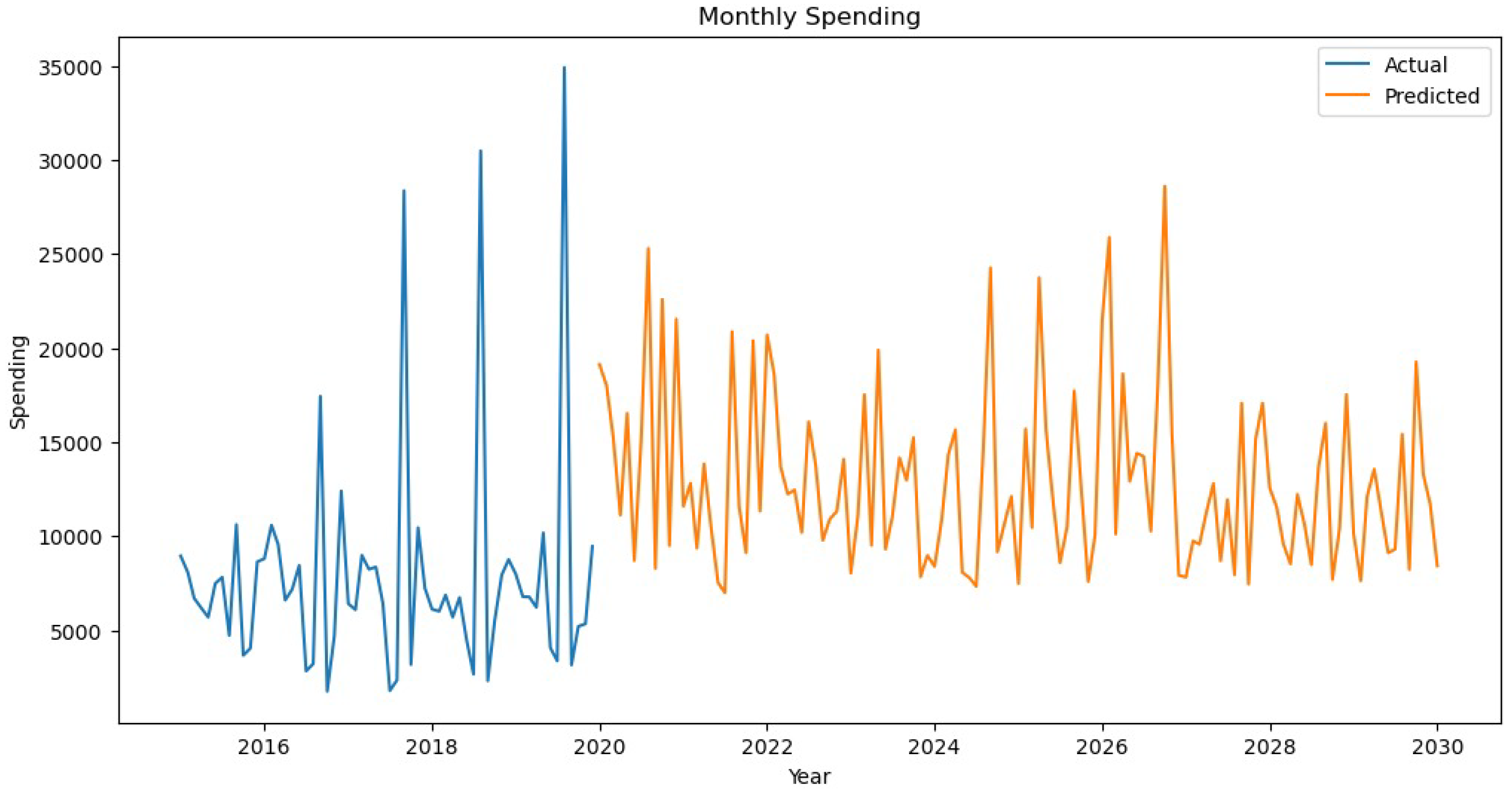
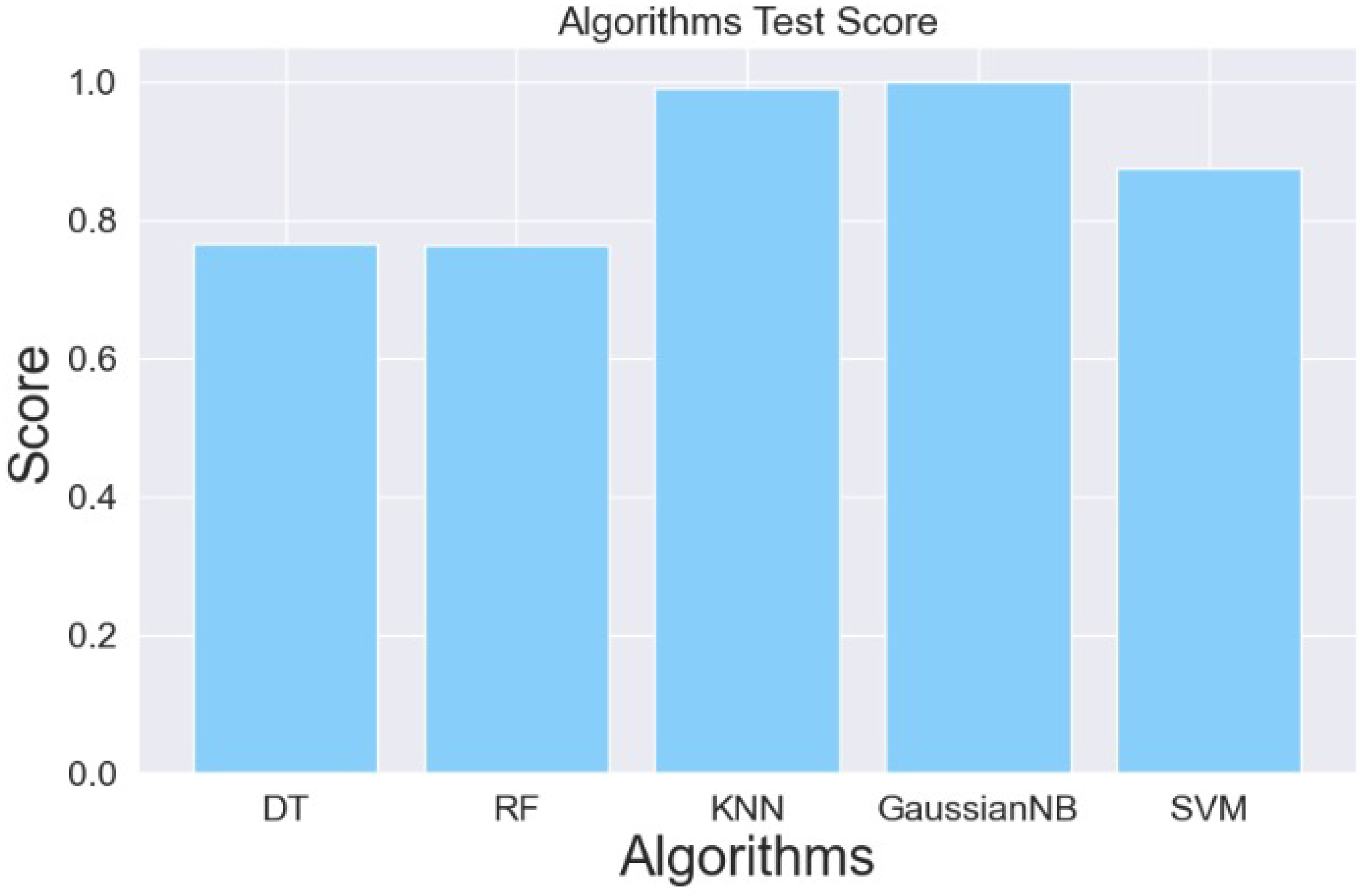
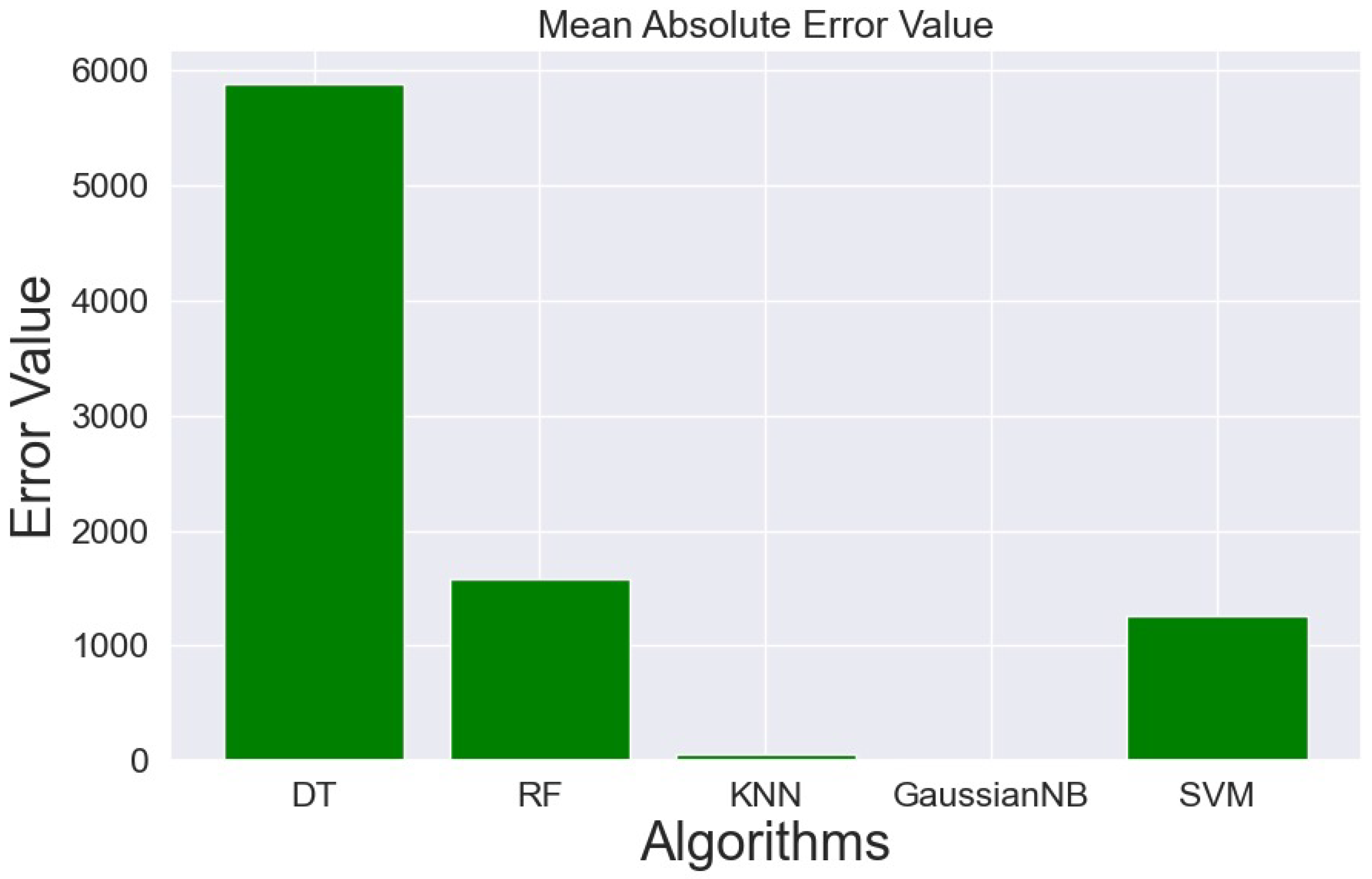
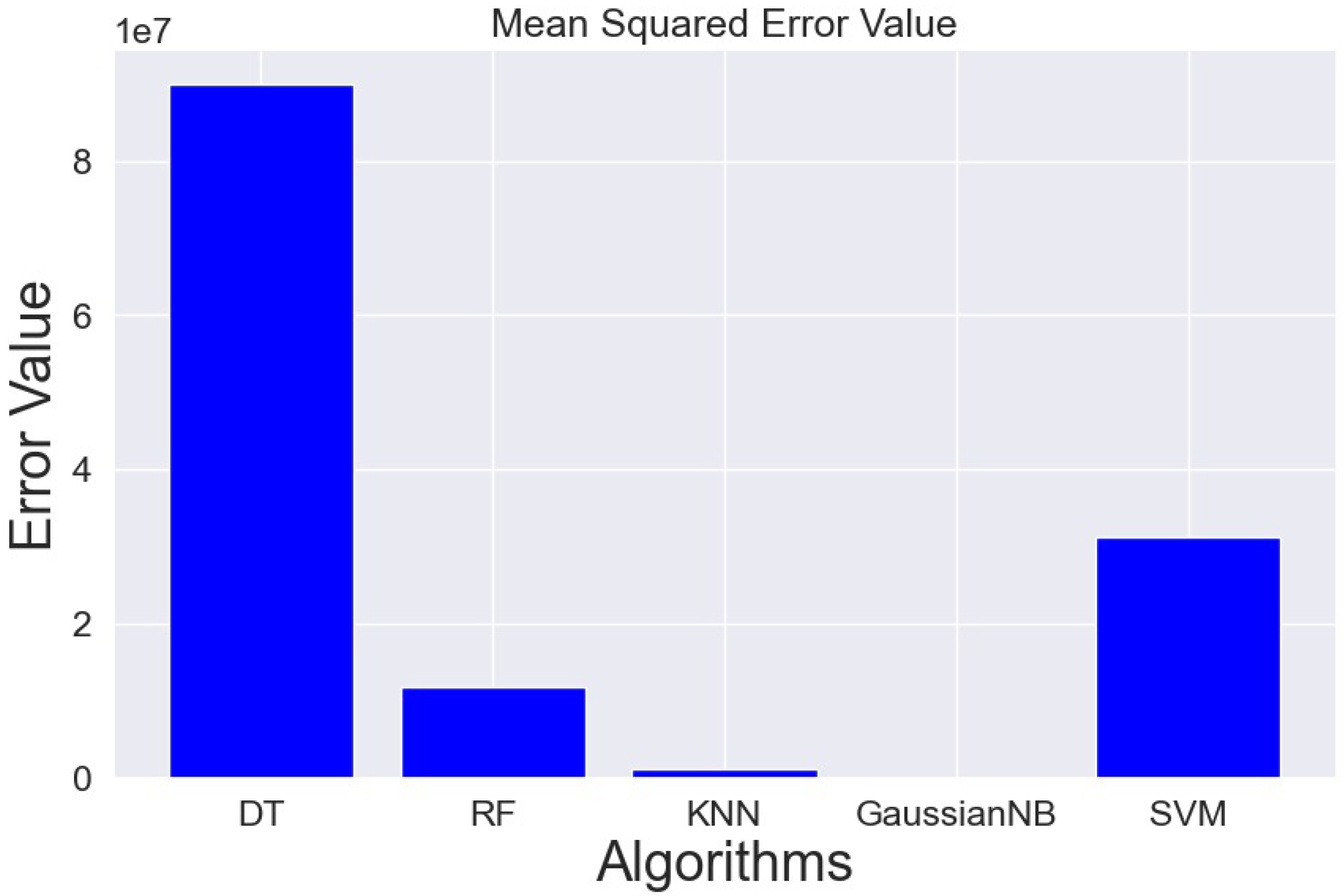

| Period | Issues | Consumer Behaviors |
|---|---|---|
| Pre-pandemic | Stable growth, infrastructure development | High tourist inflow, diverse spending patterns [1,2] |
| Pandemic | Travel restrictions, economic downturn | Reduced travel, shift to domestic tourism [3,4] |
| Post-pandemic | Recovery phase, new health protocols | Gradual return, preference for safety and sustainability [5,6] |
| Indicators | Unit | From 2015 until 2021 |
|---|---|---|
| Tourist Visits | (’000) | 965,073 |
| Tourist Overnights | (’000) | 7,335,538 |
| Tourist Expenditure | (SAR Mn) | 2,246,491 |
| Average Length of Stay | (Night) | 7 |
| Average Expenditure per Visit | (SAR) | 89,443 |
| Average Expenditure per Night | (SAR) | 9198 |
| Variable | Description | Unit |
|---|---|---|
| Number of Tourist Visits (Trips in Figure 1) | Total number of tourist visits made | Visits (’000) |
| Number of Tourist Overnights | Total number of nights spent by tourists | Nights (’000) |
| Tourist Expenditure | Total expenditure by tourists | SAR Mn |
| Average Expenditure per Visit | Average expenditure per tourist Visits | SAR |
| Average Expenditure per Night | Average expenditure per night spent | SAR |
| Hyperparameter | Decision Tree | Random Forest | Linear Regression | K Neighbors Classifier | GNB | SVC |
|---|---|---|---|---|---|---|
| max_depth | 15 | 26 | - | - | - | - |
| max_features | ‘sqrt’ | ‘sqrt’ | - | - | - | - |
| min_samples_leaf | 2 | 2 | - | - | - | - |
| min_samples_split | 2 | 8 | - | - | - | - |
| n_estimators | - | 200 | - | - | - | - |
| m (slope) | - | - | 1.2696 | - | - | - |
| c (intercept) | - | - | 0.1104 | - | - | - |
| Learning_rate | - | - | 0.05 | - | - | - |
| n_neighbors | - | - | - | 5 | - | - |
| weights | - | - | - | ‘distance’ | - | - |
| kernel | - | - | - | - | - | ‘rbf’ |
| C | - | - | - | - | - | 1.0 |
| gamma | - | - | - | - | - | ‘auto’ |
Disclaimer/Publisher’s Note: The statements, opinions and data contained in all publications are solely those of the individual author(s) and contributor(s) and not of MDPI and/or the editor(s). MDPI and/or the editor(s) disclaim responsibility for any injury to people or property resulting from any ideas, methods, instructions or products referred to in the content. |
© 2024 by the authors. Licensee MDPI, Basel, Switzerland. This article is an open access article distributed under the terms and conditions of the Creative Commons Attribution (CC BY) license (https://creativecommons.org/licenses/by/4.0/).
Share and Cite
Louati, A.; Louati, H.; Alharbi, M.; Kariri, E.; Khawaji, T.; Almubaddil, Y.; Aldwsary, S. Machine Learning and Artificial Intelligence for a Sustainable Tourism: A Case Study on Saudi Arabia. Information 2024, 15, 516. https://doi.org/10.3390/info15090516
Louati A, Louati H, Alharbi M, Kariri E, Khawaji T, Almubaddil Y, Aldwsary S. Machine Learning and Artificial Intelligence for a Sustainable Tourism: A Case Study on Saudi Arabia. Information. 2024; 15(9):516. https://doi.org/10.3390/info15090516
Chicago/Turabian StyleLouati, Ali, Hassen Louati, Meshal Alharbi, Elham Kariri, Turki Khawaji, Yasser Almubaddil, and Sultan Aldwsary. 2024. "Machine Learning and Artificial Intelligence for a Sustainable Tourism: A Case Study on Saudi Arabia" Information 15, no. 9: 516. https://doi.org/10.3390/info15090516





